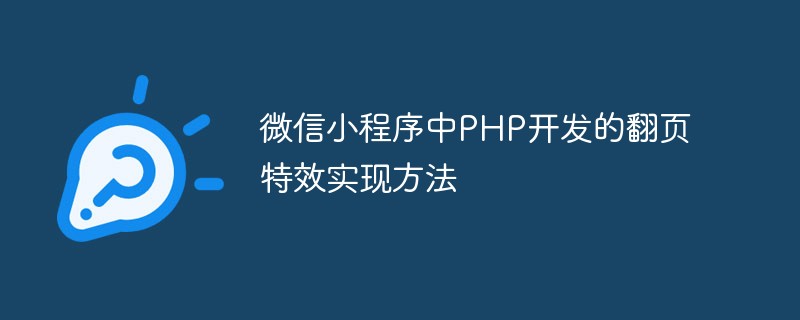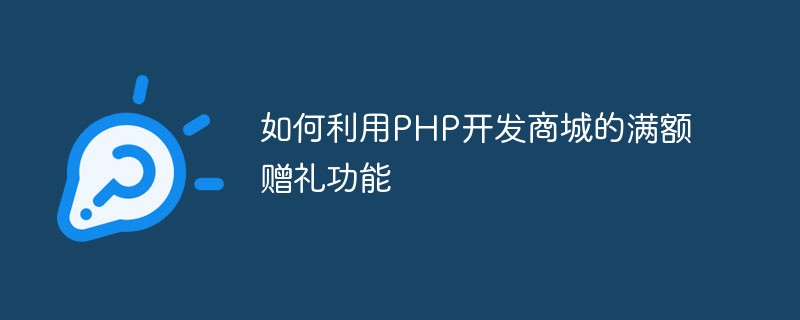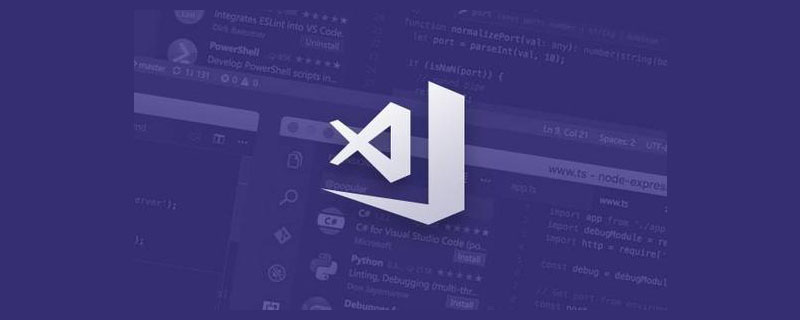 Backend Development
Backend Development PHP Tutorial
PHP Tutorial Second-hand recycling website developed using PHP supports virtual commodity management
Second-hand recycling website developed using PHP supports virtual commodity managementUsing PHP to develop a second-hand recycling website to support virtual commodity management
As people’s awareness of environmental protection increases, the second-hand recycling market is gradually emerging. In order to conveniently manage and trade second-hand items, it is a good choice to use PHP to develop a second-hand recycling website. Moreover, the demand for virtual goods in modern society is also increasing. Therefore, this article will introduce how to develop a second-hand recycling website and support the management function of virtual goods.
1. Project preparation
Before starting development, we need to install the AMP (Apache, MySQL and PHP) environment and configure the database connection. Next, we will use the MVC (Model-View-Controller) architecture to divide the project into three parts: model, view and controller.
2. Database design
- User table (users): used to store user registration information, including user ID, user name, password, etc.
CREATE TABLE users (
id int(11) NOT NULL AUTO_INCREMENT,
username varchar(50 ) NOT NULL,
password varchar(255) NOT NULL,
email varchar(100) NOT NULL,
PRIMARY KEY (id)
) ENGINE=InnoDB DEFAULT CHARSET=utf8;
- Product table (products): used to store product information, including product ID, product name, product description, etc.
CREATE TABLE products (
id int(11) NOT NULL AUTO_INCREMENT,
name varchar(100 ) NOT NULL,
description text NOT NULL,
price decimal(10,2) NOT NULL,
user_id int(11 ) NOT NULL,
PRIMARY KEY (id),
FOREIGN KEY (user_id) REFERENCES users (id)
) ENGINE=InnoDB DEFAULT CHARSET=utf8;
- Virtual product table (virtual_products): used to store virtual product information, including virtual product ID, product ID, product key, etc. Virtual products are associated with the product table through product IDs.
CREATE TABLE virtual_products (
id int(11) NOT NULL AUTO_INCREMENT,
product_id int(11 ) NOT NULL,
product_key varchar(100) NOT NULL,
PRIMARY KEY (id),
FOREIGN KEY (product_id) REFERENCES products (id)
) ENGINE=InnoDB DEFAULT CHARSET=utf8;
3. Model development
- User model (UserModel.php): Responsible for processing user-related logic, including user registration, login, querying user information, etc.
class UserModel {
public function register($username, $password, $email) {
// 用户注册逻辑
}
public function login($username, $password) {
// 用户登录逻辑
}
public function getUser($id) {
// 查询用户信息逻辑
}
}
?> ;
- Product Model (ProductModel.php): Responsible for processing product-related logic, including product creation, querying product information, etc.
class ProductModel {
public function createProduct($name, $description, $price, $userId) {
// 创建商品逻辑
}
public function getProduct($id) {
// 查询商品信息逻辑
}
}
?>
- Virtual Product Model (VirtualProductModel.php): Responsible for handling virtual Product-related logic, including virtual product creation, querying virtual product information, etc.
class VirtualProductModel {
public function createVirtualProduct($productId, $productKey) {
// 创建虚拟商品逻辑
}
public function getVirtualProduct ($id) {
// 查询虚拟商品信息逻辑
}
}
?>
4. Controller Development
- User Controller (UserController.php ): Responsible for processing user-related requests and calling the user model to process business logic.
class UserController {
public function register() {
// 用户注册逻辑
}
public function login() {
// 用户登录逻辑
}
public function getUser() {
// 查询用户信息逻辑
}
}
?>
- ProductController .php): Responsible for processing product-related requests and calling the product model to process business logic.
class ProductController {
public function createProduct() {
// 创建商品逻辑
}
public function getProduct() {
// 查询商品信息逻辑
}
}
?>
- Virtual Product Controller (VirtualProductController.php): Responsible for processing virtual product-related requests and calling the virtual product model to process business logic .
class VirtualProductController {
public function createVirtualProduct() {
// 创建虚拟商品逻辑
}
public function getVirtualProduct() {
// 查询虚拟商品信息逻辑
}
}
?>
5. View development
- User registration view (register.php): Contains the form for user registration.
- User login view (login.php): Contains the form for user login.
- Product creation view (create_product.php): Contains the form for creating products.
After developing the above code, we can access the corresponding page in the browser for testing. The above code is only an example and needs to be further expanded and optimized according to needs in actual development.
Summary:
This article introduces how to use PHP to develop a second-hand recycling website that supports virtual commodity management. By designing databases, developing models, controllers and views, functions such as user registration, login, product creation and virtual product management are implemented. I hope this article can be helpful to PHP developers when developing second-hand recycling websites.
The above is the detailed content of Second-hand recycling website developed using PHP supports virtual commodity management. For more information, please follow other related articles on the PHP Chinese website!
 微信小程序中PHP开发的翻页特效实现方法Jun 01, 2023 pm 01:51 PM
微信小程序中PHP开发的翻页特效实现方法Jun 01, 2023 pm 01:51 PM在微信小程序中,PHP开发的翻页特效是非常常见的功能。通过这种特效,用户可以轻松地在不同的页面之间进行切换,浏览更多的内容。在本文中,我们将介绍如何使用PHP来实现微信小程序中的翻页特效。我们将会讲解一些基本的PHP知识和技巧,以及一些实际的代码示例。理解基本的PHP语言知识在PHP中,我们经常会用到IF/ELSE语句、循环结构,以及函数等一些基本语言知识。
 微信小程序中PHP开发的常用工具库介绍Jun 01, 2023 pm 07:40 PM
微信小程序中PHP开发的常用工具库介绍Jun 01, 2023 pm 07:40 PM随着微信小程序的普及和发展,越来越多的开发者开始涉足其中。而PHP作为一种后端技术的代表,也在小程序中得到了广泛的运用。在小程序的开发中,PHP常用工具库也是很重要的一个部分。本文将介绍几款比较实用的PHP常用工具库,供大家参考。一、EasyWeChatEasyWeChat是一个开源的微信开发工具库,用于快速开发微信应用。它提供了一些常用的微信接口,如微信公
 如何利用PHP开发商城的满额赠礼功能May 22, 2023 am 10:02 AM
如何利用PHP开发商城的满额赠礼功能May 22, 2023 am 10:02 AM网上购物已经成为人们日常生活中不可或缺的一部分,因此,越来越多的企业开始关注电商领域。开发一款实用、易用的商城网站也成为了企业提高销售额、拓展市场的必要手段之一。在商城网站中,满额赠礼功能是提高用户购买欲望和促进销售增长的重要功能之一。本文将探讨如何利用PHP开发商城的满额赠礼功能。一、满额赠礼功能的实现思路在商城开发中,如何实现满额赠礼功能呢?简单来说就是
 微信小程序中PHP开发的加密和解密实现方法Jun 01, 2023 am 08:12 AM
微信小程序中PHP开发的加密和解密实现方法Jun 01, 2023 am 08:12 AM随着微信小程序在移动应用市场中越来越流行,它的开发也受到越来越多的关注。在小程序中,PHP作为一种常用的后端语言,经常用于处理敏感数据的加密和解密。本文将介绍在微信小程序中如何使用PHP实现加密和解密。一、什么是加密和解密?加密是将敏感数据转换为不可读的形式,以确保数据在传输过程中不被窃取或篡改。解密是将加密数据还原为原始数据。在小程序中,加密和解密通常包括
 PHP开发中提供效率的VSCode插件推荐(值得收藏)Mar 30, 2021 pm 07:31 PM
PHP开发中提供效率的VSCode插件推荐(值得收藏)Mar 30, 2021 pm 07:31 PM本篇文章给大家推荐一些VSCode+PHP开发中实用的插件。有一定的参考价值,有需要的朋友可以参考一下,希望对大家有所帮助。
 微信小程序中PHP开发的滑动验证码实现方式Jun 01, 2023 pm 09:01 PM
微信小程序中PHP开发的滑动验证码实现方式Jun 01, 2023 pm 09:01 PM随着互联网的快速发展,网络安全问题也变得越来越严峻。针对恶意攻击、刷单等安全威胁,很多网站和应用程序都使用了验证码来保护用户信息和系统安全。在微信小程序中,如何实现一个安全可靠的滑动验证码呢?本文将介绍使用PHP开发的滑动验证码实现方式。一、滑动验证码的原理滑动验证码是指在验证用户身份时,通过用户在滑块上滑动完成验证过程。其原理是将一张图片分成两部分,一部分
 微信小程序中PHP开发的文本框自动完成功能实现方法Jun 01, 2023 pm 07:42 PM
微信小程序中PHP开发的文本框自动完成功能实现方法Jun 01, 2023 pm 07:42 PM随着微信小程序的普及,各类开发需求也日渐增多。其中,文本框自动完成功能是小程序中常用的功能之一。虽然微信小程序提供了一些原生的组件,但是有一些特殊需求还是需要进行二次开发。本文将介绍如何使用PHP语言实现微信小程序中文本框自动完成功能。准备工作在开始开发之前,需要准备一些基本的环境和工具。首先,需要安装好PHP环境。其次,需要在微信小程序后台获取到自己的Ap
 微信小程序中PHP开发的自动更新方法Jun 01, 2023 pm 11:40 PM
微信小程序中PHP开发的自动更新方法Jun 01, 2023 pm 11:40 PM近年来,移动互联网的快速发展和移动终端的普及,让微信应用程序成为了人们生活中不可或缺的一部分。而在微信应用程序中,小程序更是以其轻量、快速、便捷的特点受到了广泛的欢迎。但是,对于小程序中的数据更新问题,却成为了一个比较头疼的问题。为了解决这一问题,我们可以使用PHP开发的自动更新方法来实现自动化数据更新。本篇文章就来探讨一下微信小程序中PHP开发的自动更新方


Hot AI Tools

Undresser.AI Undress
AI-powered app for creating realistic nude photos

AI Clothes Remover
Online AI tool for removing clothes from photos.

Undress AI Tool
Undress images for free

Clothoff.io
AI clothes remover

AI Hentai Generator
Generate AI Hentai for free.

Hot Article

Hot Tools

VSCode Windows 64-bit Download
A free and powerful IDE editor launched by Microsoft

DVWA
Damn Vulnerable Web App (DVWA) is a PHP/MySQL web application that is very vulnerable. Its main goals are to be an aid for security professionals to test their skills and tools in a legal environment, to help web developers better understand the process of securing web applications, and to help teachers/students teach/learn in a classroom environment Web application security. The goal of DVWA is to practice some of the most common web vulnerabilities through a simple and straightforward interface, with varying degrees of difficulty. Please note that this software

Notepad++7.3.1
Easy-to-use and free code editor

SecLists
SecLists is the ultimate security tester's companion. It is a collection of various types of lists that are frequently used during security assessments, all in one place. SecLists helps make security testing more efficient and productive by conveniently providing all the lists a security tester might need. List types include usernames, passwords, URLs, fuzzing payloads, sensitive data patterns, web shells, and more. The tester can simply pull this repository onto a new test machine and he will have access to every type of list he needs.

SublimeText3 Mac version
God-level code editing software (SublimeText3)





